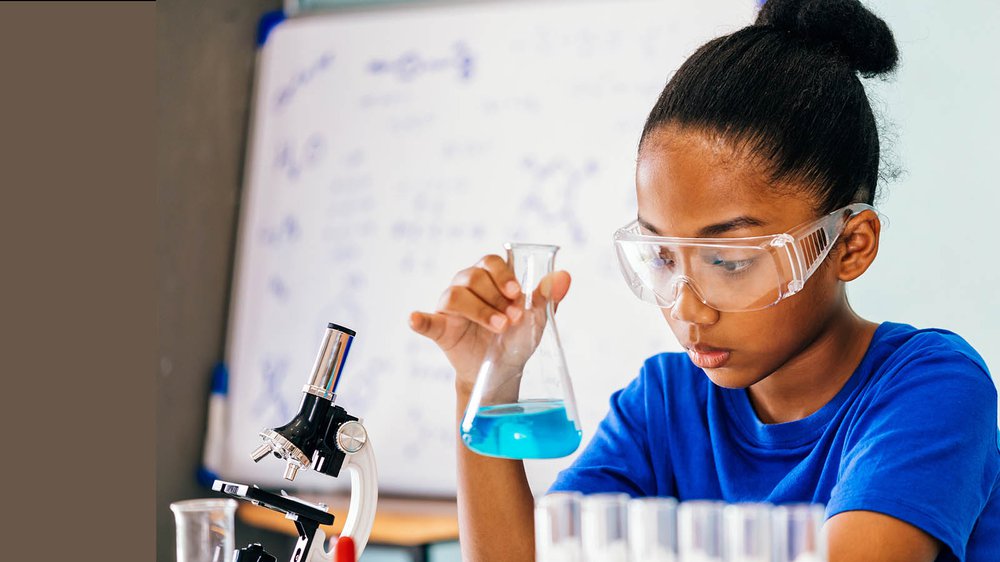For us here in the South, we have been back-to-school for more than a week. Many counties are opting for virtual learning while the number of coronavirus cases continue to climb. From the conversations I am having with students, parents, and educators, it seems that staying safe and learning at home are more challenging than we anticipated. Wi-Fi networks lack the capacity to support the sheer number of students online at one time. Zoom links are lost. Educational platforms do not have intuitive navigation for young learners. And yet…
What if we look at this new way of learning as an experiment? Instead of being overly concerned with everyone getting it right, could we frame this as we are all learning together?
Let’s apply the Scientific Method to our current dilemma and correlate Social-Emotional Learning (SEL) to each step.
Step 1 - Ask a Question: How do we transition our students to online learning?
Over the past six months, educators have wrestled with this question with painstaking detail. Given our independent decision-making, there is not a one-size-fits-all solution. However, this question has raised other questions for our nation about education and equity, which we may have not considered as fully if we were not in this situation. What we have witnessed is increased innovation and greater collaboration by the majority of the educational community.
SEL Tip for Students: Solving big problems starts with asking the right questions. Be open to the discovery process. This requires Humility – not thinking too much or too little of yourself.
Step 2 – Do Background Research: In-person Learning, Blended Learning, or Virtual Learning?
States, districts, and schools have examined best practices for each option, particularly considering the safety protocols of the pandemic. They have created action plans for each scenario, knowing that adopted approach must be fluid due to the possibility of a surge of cases. Again, the research about the virus and the variety of learning options has led many back to a student-centered approach to teaching and learning. In some ways, the current crisis has helped to refuel our passion for children and communities.
SEL Tip for Students: You don’t know what you don’t know. Be open to learning new things, but stay anchored to your Purpose – reason for being.
Step 3 – Construct a Hypothesis: We can safely and successfully educate students during the pandemic.
A hypothesis is an idea or explanation that can be tested for validity. As a nation, we could have agreed to put this school year on hold. We chose instead to keep moving forward, embracing the challenge of educating our children in these unprecedented times. As uncomfortable as it is, we must remind ourselves and each other that we made a supposition that this can be done.
SEL Tip for Students: Choice is the opportunity and power to make decisions. Not every choice will be the best, but you can learn from every choice.
Step 4 – Conduct an Experiment: Going back to school during a pandemic.
We are living an experiment. We do not yet know how school works in the time of the virus. We are discovering as we go. Each day provides more opportunities for us to learn and adjust our teaching and learning methods. It is absolutely essential to our mental well-being that we remember this fact.
SEL Tip for Students: Patience is waiting without complaining; bearing pain or trials without complaint. Instead of grumbling, take note of what you’re discovering and how you’re growing.
Step 5 – Collect & Analyze Data: The numbers tell the story.
The number of virus cases. The number of students attending school in-person. The number of students choosing another option for education. The number of devices in a district. The number of students needing Wi-Fi. Whatever the numbers may be, they indicate what is happening with real people.
SEL Tip for Students: Keep people first. Caring is showing concern for the well-being of others.
Step 6 – Draw Conclusions & Report Results: Keep it real.
Over the next few months, we will have metrics for if and what students are learning. However, we must be open to evaluating these metrics in new ways and willing to continue school differently for years to come. We do not need value judgements of good or bad. Instead, we need to ask: What’s working? What’s not working? What can we do better?
SEL Tip for Students: Be honest – speak and act truthfully; live the truth. Own the truth that experiments reveal rather than slanting results towards your preconceived notions.
As caring adults leading children through these uncertain times, we must maintain a growth mindset. Yes, this is not the world that any of us imagined. But here we are! How beneficial it is to have an open dialogue with our young people in the midst of the unsettledness. The lesson for us all, students, families, and educators, is to create, cooperate, and iterate! This is lifelong learning!
About the author

Tamara Fyke is an educator and social entrepreneur with a passion for kids, families, and urban communities. She is the creator and author of Love In A Big World, which provides mental health, SEL, and wellness curriculum and content. During quarantine, Tamara created MusiCity Kids, an online educational show for kids ages 6-12 that addresses health, movement, character development, STEAM, and more.
Tamara is editor of Building People: Social & Emotional Learning for Kids, Schools & Communities, a book that brings 12 wide-ranging perspectives on SEL to educators, parents, and leaders. Follow her on Twitter .











